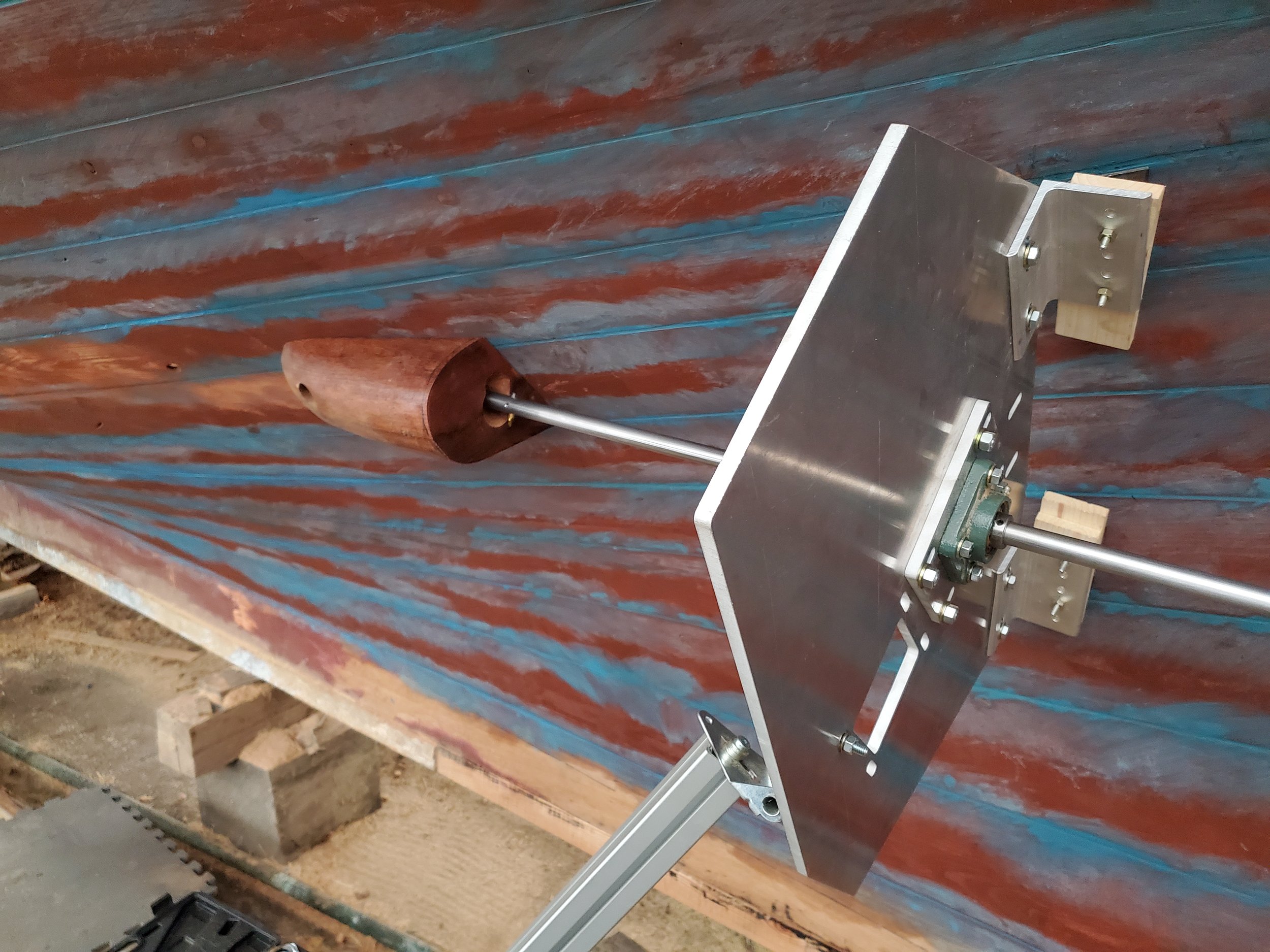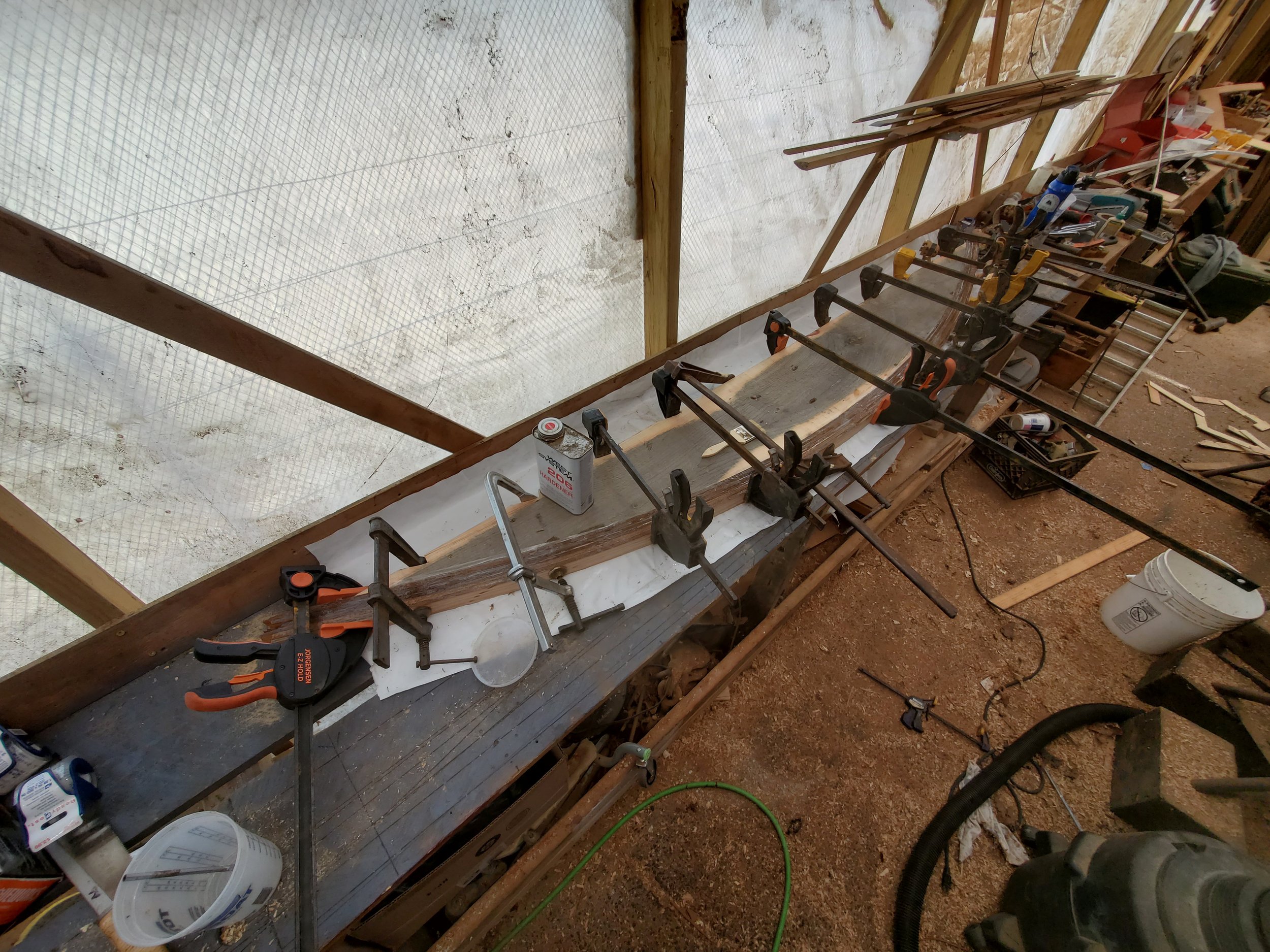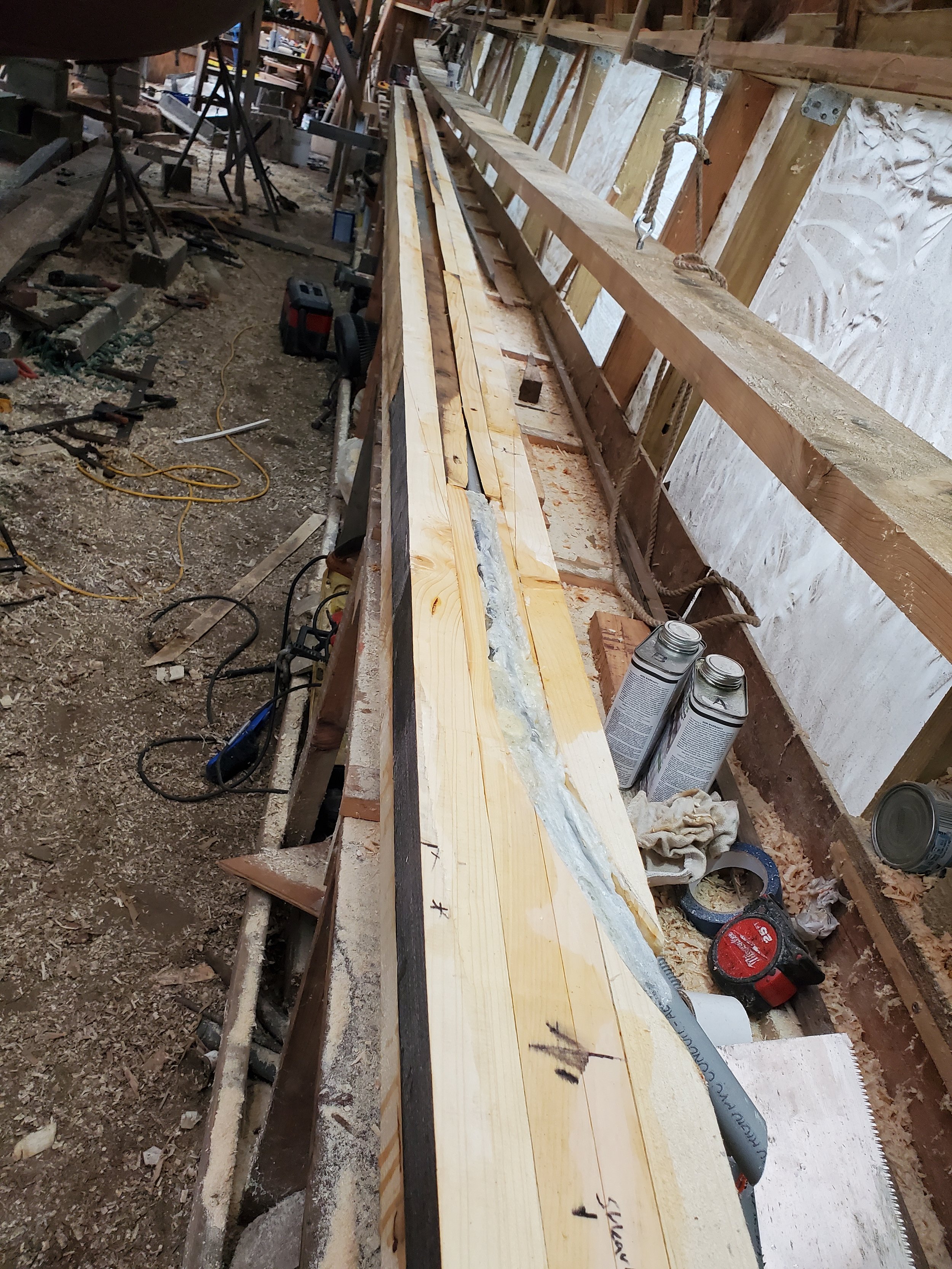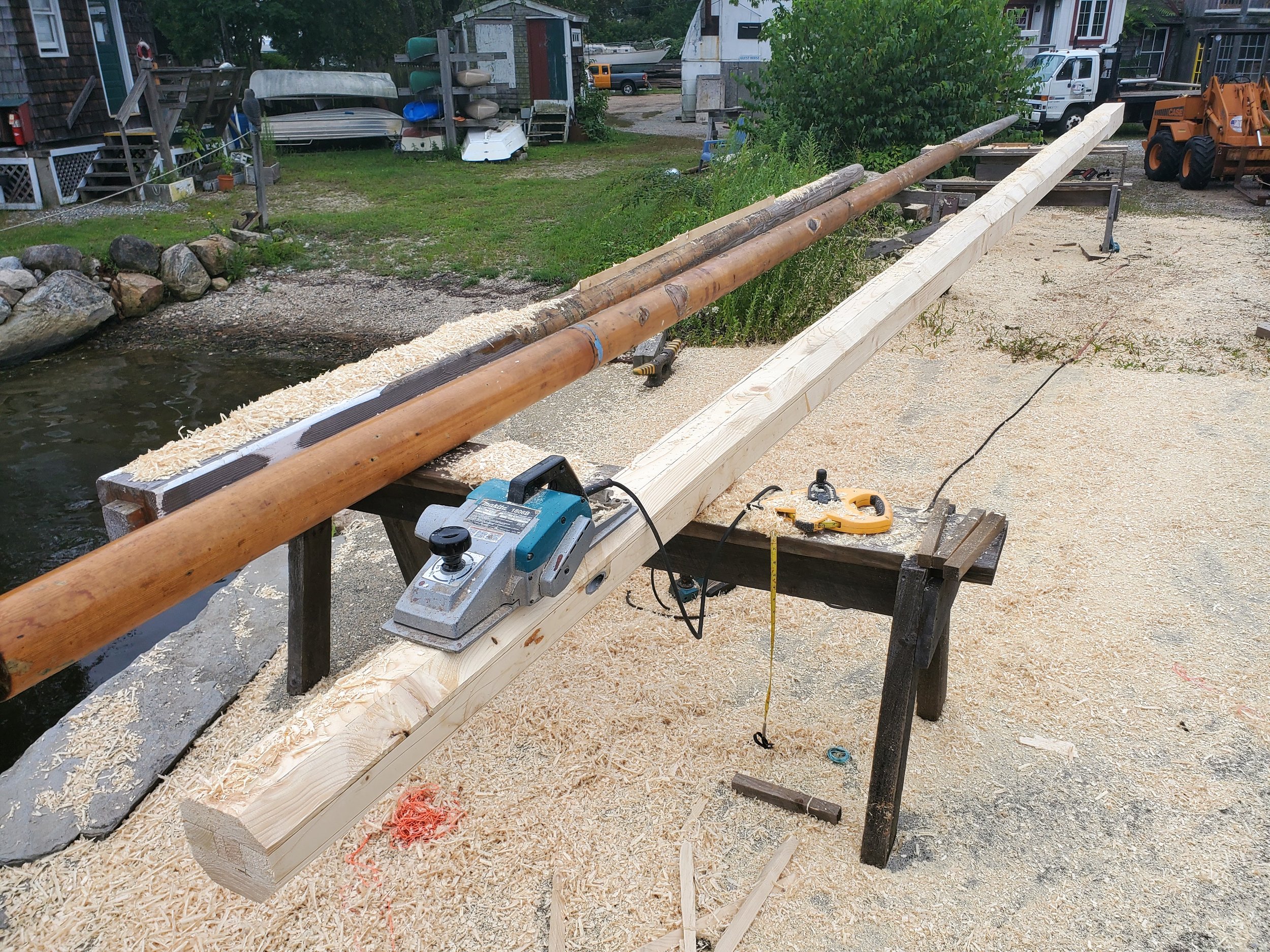Hello again! I have a bit of catching up to do, as usual. 2022-2023 was a busy time, and the work was extremely varied.
Boring for the prop shaft, December 2022
My friend Josh helped to bore out for the propeller shaft, which was an interesting operation I’ve not done before. I bored a pilot hole large enough to centre a 1” boring bar in, and then we progressively increased the cut until the bore was perfectly round and large enough to accept a specially machined bronze tube which will hold the seal inboard and a cutless bearing outboard. The “gland” (for lack of a better term) on the outside of the hull is an angelique keel offcut shaped to fit.
Laying out the cabin sole, January 2023
Interior painted and bulkhead underway, February 2023
Painting the interior white made a huge difference to the space, and to my morale!
Lead ballast stacked on top of the keel - April 2023
Next was ballasting, everyone’s favourite… I was able to acquire an old sailboat keel a few years back which I cut up into chunks (I highly recommend never doing this, it was extremely unpleasant and nearly destroyed my chainsaw. And probably myself haha) - this combined with the lead ballast remaining from Rosalind’s complement when I got her gave me 3100 lbs of lead internal to be set in concrete, plus the 1500 lbs of lead external.
Thinning the concrete/confusing future archaeologists, April 2023
Now, according to my calculations the volume of concrete needed to fill between the floors would have been heavier than was wanted so I went about “thinning” it with whatever light, space filling stuff I could get my hands on ranging from tupperware to cut up pool noodles. The next person to chip out the concrete is going to be very confused... But I kept the full complement under 10,000lbs which should leave a bit of space for trim ballast on top of the concrete (I have a bit more lead for this purpose).
This is all calculated based on the weight of the ballast and other heavy stuff I took out of the boat originally, and my best guess at how much more she wanted (she was sitting a little high during the Richard era) - all of which does give me some anxiety! There’s a possibility that on launch day I’ll have to remove some, though I think it’s unlikely. I’m really glad to be launching by travellift however, as I can easily do a test run the day before hard launch and make sure.
Ballasted, April 2023
Dane and Andy assist with hoisting Amelia, May 2023
In May I cut through some of the workshop’s framing to allow Amelia the Perkins into the boat. Andy ran the boom truck and Dane came to help maneuver (thank you again), and it went off without a hitch.
House beam on the mould, May 2023
After Amelia was situated I embarked on building the house, which amongst other things entailed making a mould and laminating a whole bunch of beams, all out of resawn larch and douglas fir planking offcuts. The sides are MDO, and the top itself I made out of 3/8 beadboard (looks nice from inside) and MDO, all glassed.
The house assembled and primed, July 2023
The first assembled stave of the foremast, July 2023
At the same time I started working on building the foremast, out of a black spruce I got for free on facebook marketplace and milled up the year before. To keep weight down, and to allow running electrical up the middle I elected to build a hollow box laminate.
3 sides done with conduit installed, 4th side suspended overhead. Lowering it into place with glue on everything was… interesting. August 2023
8 sided, August 2023
Bulwarks completed, July 2023
And in the midst of all of this, I was also installing the bulwarks - again out of resawn larch planking offcuts (ended up being a bit of red cedar in there too as I ran low on long stock).
Caprail installed, September 2023
And the caprail! I built the caprail out of american white oak, a live oak breasthook, and a stern hook of eastern larch. I elected not to do the ultra traditional thing with caprails, which is to mortise their undersides to meet tenons on the stanchion tops - instead I attached a stringer to the inboard face of the stanchions, and fastened the caprail to that and to the top of the bulwark planking. This strikes me as being stronger, as it turns the system into a truss. It does make for a wide caprail but I feel that’s not out of place on a working boat like Rosalind.
To be continued! Thank you for reading.














